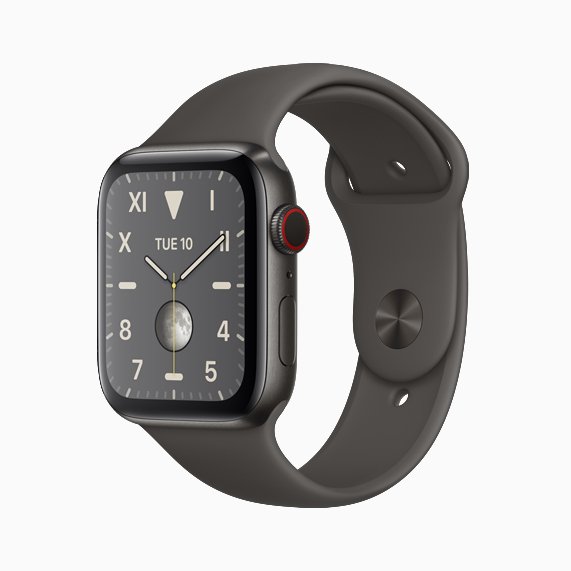After years of ups and downs, the global smartphone market recorded growth in Q4 2019 for the second consecutive quarter, rising by 1% to 369 million units. This growth signals a cautious recovery for the industry, which saw overall global shipments fall by 2% for the year, totalling 1.37 billion units compared to 1.4 billion in 2018. Apple emerged as the leader in Q4, shipping 78 million units, while Samsung and Huawei followed closely in second and third positions, respectively.
Market Trends and Success Stories
The resurgence in Q4 2019 can be attributed to several factors, including strong demand for Apple’s iPhone 11 models and aggressive marketing efforts by Chinese vendors in emerging markets.
Ben Stanton, Senior Analyst at Canalys, noted, “This is an industry-wide success – eight of the top ten vendors grew in Q4. When we saw the first declines in global volume a couple of years ago, Canalys stated that the industry was moving from the growth era to the cyclical era. This growth spurt will not last forever but will be one of a series of peaks and troughs, as the customer refresh rate for smartphones reaches its new equilibrium point.”
Emerging markets played a significant role in the Q4 success, with vendors targeting users still on feature phones. Devices priced under USD $100 gained traction, while models like Vivo’s Y91C performed exceptionally well in regions such as Indonesia. Apple also tapped into these markets with the relatively affordable iPhone 11, expanding its reach to a broader customer base.
Vendor Highlights
Apple
Apple capitalised on the success of its iPhone 11 series, which offered better value compared to previous models. Its shipments grew by 9% year-over-year in Q4 2019, reaching 78 million units. For the full year, Apple held third place in the global market with a 14.5% share. Moving into 2020, Apple’s focus on competitive pricing and appealing features will be key to sustaining this momentum.
Samsung
Samsung shipped 71 million units in Q4 2019, maintaining steady growth of 1%. For the full year, Samsung led the global market with 298.1 million shipments and a 21.8% market share. The company’s expanded portfolio, including innovative mid-range models, allowed it to fend off competition from Huawei and other Chinese vendors. As Huawei continues to face restrictions due to the US Entity List, Samsung has a prime opportunity to strengthen its position.
Huawei
Huawei took third place in Q4 2019, shipping 56 million units. While its performance in China remained robust, growing 47%, its overseas shipments suffered a 7% decline due to ongoing political challenges and the lack of Google Mobile Services (GMS) on its newer devices. Despite these obstacles, Huawei’s technological advancements, such as the triple-lens cameras on its P30 Pro, helped it maintain its reputation as a leader in innovation.
Smartphone Releases in 2019
Premium Smartphones:
- Samsung Galaxy S10 ($1,349): Exynos 9 9820 / Snapdragon 855, 8GB RAM, 6.1-inch Dynamic AMOLED display, Triple rear cameras (12MP wide, 12MP telephoto, 16MP ultrawide), 10MP front camera, Ultrasonic fingerprint sensor, Wireless PowerShare.
- Samsung Galaxy S10+ ($1,499): Exynos 9 9820 / Snapdragon 855, 8GB/12GB RAM, 6.4-inch Dynamic AMOLED display, Triple rear cameras (12MP wide, 12MP telephoto, 16MP ultrawide), dual 10MP/8MP front cameras, Ultrasonic fingerprint sensor, Wireless PowerShare.
- Samsung Galaxy S10e ($1,199): Exynos 9 9820 / Snapdragon 855, 6GB/8GB RAM, 5.8-inch Dynamic AMOLED display, Dual rear cameras (12MP wide, 16MP ultrawide), 10MP front camera, Side-mounted fingerprint sensor.
- Apple iPhone 11 Pro ($1,749): Apple A13 Bionic chip, 4GB RAM, 5.8-inch Super Retina XDR display, Triple 12MP rear cameras (wide, telephoto, ultrawide), 12MP TrueDepth front camera, Night mode, improved battery life.
- Apple iPhone 11 Pro Max ($1,899): Apple A13 Bionic chip, 4GB RAM, 6.5-inch Super Retina XDR display, Triple 12MP rear cameras (wide, telephoto, ultrawide), 12MP TrueDepth front camera, Night mode, improved battery life.
- Huawei P30 Pro ($1,099): Kirin 980, 8GB RAM, 6.47-inch OLED display, Quad 40MP/20MP/8MP/TOF Leica rear cameras, 32MP front camera, 5x optical zoom, periscope lens, Night mode.
- OnePlus 7 Pro ($899): Qualcomm Snapdragon 855, 6GB/8GB/12GB RAM, 6.67-inch Fluid AMOLED display with 90Hz refresh rate, Triple 48MP/16MP/8MP rear cameras, 16MP pop-up front camera, Fast charging, UFS 3.0 storage.
Mid-Range Smartphones:
- Samsung Galaxy A50 ($499): Exynos 9610 Octa-core processor, 4GB/6GB RAM, 6.4-inch Super AMOLED display, Triple 25MP/8MP/5MP rear cameras, 25MP front camera, In-display fingerprint sensor, fast charging.
- Google Pixel 3a ($649): Qualcomm Snapdragon 670, 4GB RAM, 5.6-inch OLED display, 12.2MP rear camera, 8MP front camera, Night Sight, Google Assistant integration.
- Xiaomi Mi 9T ($499): Qualcomm Snapdragon 730, 6GB RAM, 6.39-inch AMOLED display, Triple 48MP/13MP/8MP rear cameras, 20MP pop-up front camera, In-display fingerprint sensor, fast charging.
Budget Smartphones:
- Realme 3 ($269): MediaTek Helio P60, 3GB/4GB RAM, 6.2-inch IPS LCD, Dual 13MP/2MP rear cameras, 13MP front camera, Large battery, affordable price.
- Samsung Galaxy A20 ($299): Exynos 7884, 3GB RAM, 6.4-inch Super AMOLED display, Dual 13MP/5MP rear cameras, 8MP front camera, Large battery, affordable price.
- Nokia 4.2 ($249): Qualcomm Snapdragon 439, 2GB/3GB RAM, 5.71-inch IPS LCD, Dual 13MP/2MP rear cameras, 8MP front camera, Dedicated Google Assistant button.
The global smartphone market’s modest growth in late 2019 underscores its resilience despite previous declines. With a mix of premium innovations and affordable options, manufacturers are finding ways to cater to diverse customer needs. As 2020 begins, all eyes are on how vendors will navigate the next cycle of competition and consumer demand.





